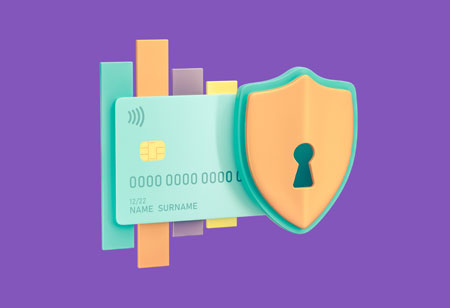THANK YOU FOR SUBSCRIBING
Be first to read the latest tech news, Industry Leader's Insights, and CIO interviews of medium and large enterprises exclusively from CFO Tech Outlook
THANK YOU FOR SUBSCRIBING

By
CFO Tech Outlook | Monday, July 27, 2020
Stay ahead of the industry with exclusive feature stories on the top companies, expert insights and the latest news delivered straight to your inbox. Subscribe today.
Due to the growing number of cybercriminals, there are more strategically focused cyberattacks; therefore, there is a demand for more robust security measures to deal with the issue.
FREMONT, CA: All the new apps, or avenue via which the customers can interact digitally, enable them to use their personal information online, and face cybersecurity threats. Every data breach indicates lost trust, customers, revenue, business, jobs, and potential lawsuits. The customers' financial livelihood is at stake as the hackers can do incredible amounts of damage with simple things like obtaining a customer's debit card number. But data shows that it is just the tip of an iceberg in terms of financial damage.
Here are a few trends and vulnerabilities that banks and financial institutions must consider to help them achieve data security.
[vendor_logo_first]AI as a Long Term Solution
It is a widespread belief that the answer to helping combat cybersecurity risks and attacks rests in the proper implementation of AI software throughout all sectors of their business. Artificial Intelligence will allow businesses, especially relevant to the future of financial institutions, to employ predictive analytics to utilize face and voice recognition, develop algorithms that can detect and stop money laundering in seconds, and shut down fraudulent activity before hackers can get away with any relevant personal data. This cannot be done without changes to cybersecurity protocols that are already in place. AI can help make this possible.
ATMs Need New Software & OS
Financial institutions will first need to address the security of their legacy technology. This means that decisions must be made about securing their existing software better while considering options for upgrading to something more secure.
Some are beginning to consider a good solution for the future is switching ATMs to Linux via Ubuntu or some other OS. Linux may be better suited for ATMs because it is open-source, meaning that there are, as ATM Marketplace describes, thousands of eyes at any moment that can examine and scrutinize every code change.
Mobile Apps
The average individual has at least twenty different apps on their smartphone for information, communication, entertainment, and finance, increasing usage by 50 percent every year. It is this fact that has made mobile banking apps a prime target for hackers. With the implementation of 4G LTE and 5G data services in a growing number of cellular markets, more apps are being made readily available faster to keep up with the competition.
If banks and web-based app services are not prepared for the increased number of predators at work, many financial institutions, and more importantly, their customers could find themselves victims of identity or financial theft.
See Also: Top Artificial Intelligence Companies
I agree We use cookies on this website to enhance your user experience. By clicking any link on this page you are giving your consent for us to set cookies. More info



